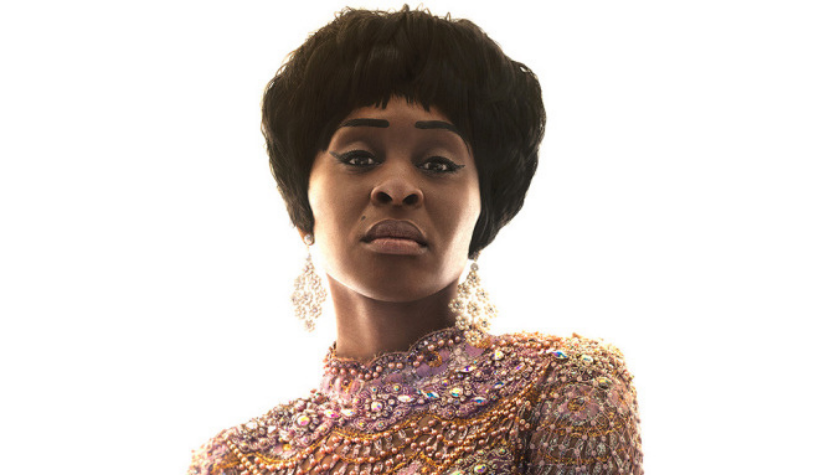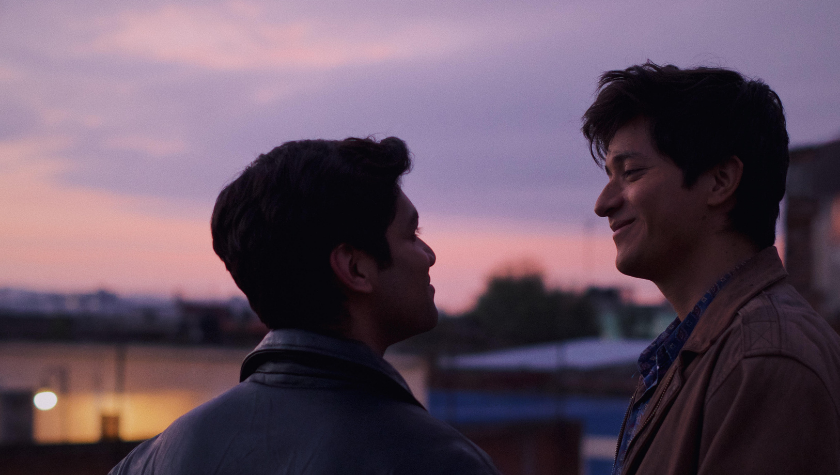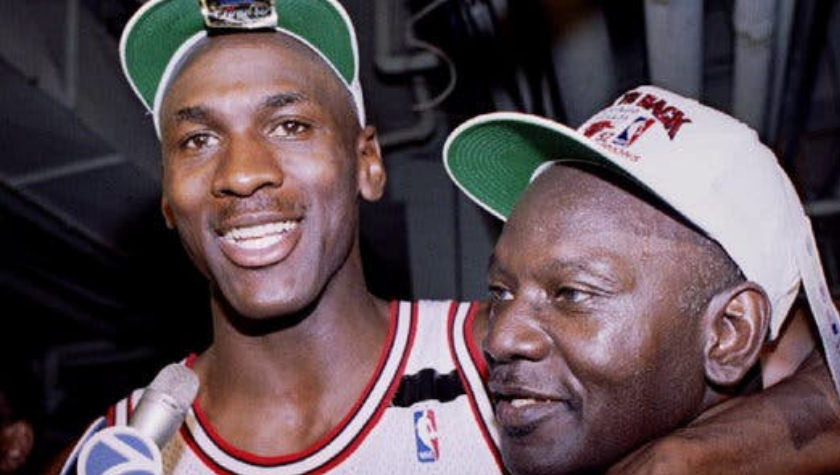Cheer: The delicate task of storytelling without traditional scripts
June 1, 2022
After standing with arms akimbo, Maddy Brum brings one fist up in triumph. It’s beautiful. Anyone watching Netflix’s Cheer can identify her with aspirations and her desire to win. In between all the acrobatic and physical skills, there is a soul captured in the Navarro cheer team, and their opponent Trinity Valley.
Director and producer Greg Whiteley sought to capture this balance of grit and gloss when filming the series. After the show’s Emmy-winning first season, he has big shoes to fill—shoes of his own making.
“Our job is to always show up and as artfully and as honestly as we can document their real lives,” Whiteley said. “And it just so happens in this instance, their real lives had changed because they had become famous.”
The success of season one shot the Navarro team to fame. Viewers see it from the very start as the filmmakers of the documentary series shows how cheerleaders take to social media to connect with fans and travel across the country for interviews and PR ventures. Whiteley commented that it made their lives “infinitely more complicated,” but not in a bad way. It’s just complicated.
Luckily, Whiteley said, making documentary films and series for more than a decade prepared him to roll with the punches.
“I think I've built up muscles that have allowed me to be open and flexible,” he said. “I always come with an idea of [where] I think the story might go, and very frequently—if not all the time—it's going to deviate from that.”
He added, “So, this was really no different.”
One curveball that was unexpected for everyone in front of and behind the camera was the sexual misconduct charges against Navarro’s Jerry Harris. According to the New York Times, Harris plead guilty to two of the seven felony charges against him in February 2022 after pleading not guilty in December 2020. He will be sentenced on June 28 and faces up to 50 years in prison.
Learning the news of the charges while filming made Whiteley’s job as a documentary filmmaker complicated in its own way. After learning the news, he knew he had to be sensitive with how he captured the moment for the team.
“Our job was to document not just what had happened to Jerry, but to properly account for how it affected the team; how it affected individual principal characters that we were following on that team,” he said.
The episode titled “Jerry” takes viewers through multiple perspectives, including the two teen twins who accused Jerry of sexual abuse. Whiteley explained that he thought about “who are the people we can talk to flesh this story out.” Just like in a scripted show, he wanted to tell all of the characters' stories.
“It felt very high stakes,” he continued. “I mean, there's lots of things that we're covering, that are curveballs or things that we weren't expecting. This particular story element, it just felt like it needed to be handled with an incredible amount of sensitivity.”
Whiteley shared that he was just one mind behind the large team who worked on the series and contributed to the thoughtful considerations taken when tackling the curveball. He explained that “it was very difficult to process at times” because of how close he was to the team.
Part of the closeness comes from already spending a season with the cheerleaders and coaches. It also pushed him to take his storytelling and filmmaking a step further.
“Every time we do something, we want to do it better than the last time we did it,” he said.
As with many of his projects, one thing Whiteley focused on doing was focusing on specific narratives in the Corsicana, Texas teams.
“If you cast the net too wide, you end up getting a mile wide, but an inch deep,” he explained. “And for our storytelling purposes, we’d rather go an inch wide and a mile deep. So that requires [you to] narrow your focus.”
He focused on the stories of specific members, like Brum, Le’Darius Marshall and Jada Wooten.
He advises documentary filmmakers to go with their instincts when it comes to deciding what stories to highlight. “We’re always second-guessing ourselves as days go on,” he explained.
“Then as weeks and months go on, did we choose the right people? But we’ve learned to trust our instincts and stick with those initial people that you chose.”
Whiteley said that working on the series is like “making two documentary series” at once because he had to capture two different worlds: Trinity Valley and Navarro. COVID also presented some challenges because each crew for each school had its own pod with Whiteley (who is at the helm) jumping back and forth between the two. He had to put his trust in people who could steer the ship while he was covering the rival team.
“They’re going to be making good decisions,” he said. “Even when I am there, they’re going to tell me when I’m wrong. So, these are the people that I trust. If I didn’t have that, you couldn’t do what we did, which is really just be completely embedded in separate worlds but have both of those stories mesh in a cohesive way.”
This truly came into play in the final episode at Daytona as both teams awaited their results. Unlike previous years, they announced the winner virtually because of COVID-19. So, Navarro watched the results come in from a ballroom while Trinity Valley viewed them from a hotel room.
Whiteley recalled getting emotional while witnessing Brum see the results come in, watching as the bright twinkle in her eye transitioned into tears with Navarro’s defeat. Meanwhile, his emotions were tugged in a different direction as he watched Wooten jump up with excitement and take to the ocean upon hearing the news of her win.
“I would get emotional seeing her [Brum] because I knew how much that meant to her,” he said. “I knew how disappointing that was. And every time I see Jada celebrating in the water, my heart soars.”
In one of the final sequences of season two, the Trinity Valley team runs to the beach with cameras tracking them near the water, filming as they trudged through the waves in triumph. Whiteley had the emotionally challenging task of running from Navarro’s heartbreak to Trinity Valley’s howling victory on the beach.
“Emotionally, I’m a mess,” he recalled.
“As I'm running, I can see TVCC [Trinity Valley Community College],” Whiteley said. “I'm going to catch them; I'm going to just pass them. And as I'm passing them, their joy was just palpable. And it just infused me, and I started crying all over again because I was so happy for these kids. And I never felt anything like that in my life where I've gone on that kind of a roller coaster in just a matter of seconds.”
This was exactly what he wanted to capture from the start. He wanted to “keep the filmmaking raw and real, but also show viewers how it feels to be on the team or be a cheer fan in the audience.” In each triumphant pyramid, shout and tumble, Whiteley and his team strived to capture just how each cheerleader on both teams viewed cheer.
“It’s magnificent,” he said. “They [the filmmaking team] balanced the grit and gloss of what they were capturing on camera.”
Written by: Steven Vargas
Steven Vargas is a multimedia journalist based in Los Angeles whose work focuses on arts, entertainment and activism. He is a current grad student at USC Annenberg pursuing an MA in Specialized Journalism (The Arts) and previously graduated from USC with a BA in Theatre and Journalism with a minor in Dance. He is a current member of the Equity Board, a new initiative at Annenberg Media dedicated to diversifying sourcing and promoting inclusive coverage across the publication. His short doc, “Dancing at Home,” earned first place in the LA Press Club’s “Life in the Time of the Coronavirus Contest" in May 2020. More recently, he co-directed "Two Paths: One Direction," an award-winning short documentary produced with students from the USC and Prairie View A&M University about their experiences of 2020. He produced work for ET Live, TheWrap, Dance Magazine, BuzzFeed News, and more. His work can be found here: https://www.vargassteven.com/



